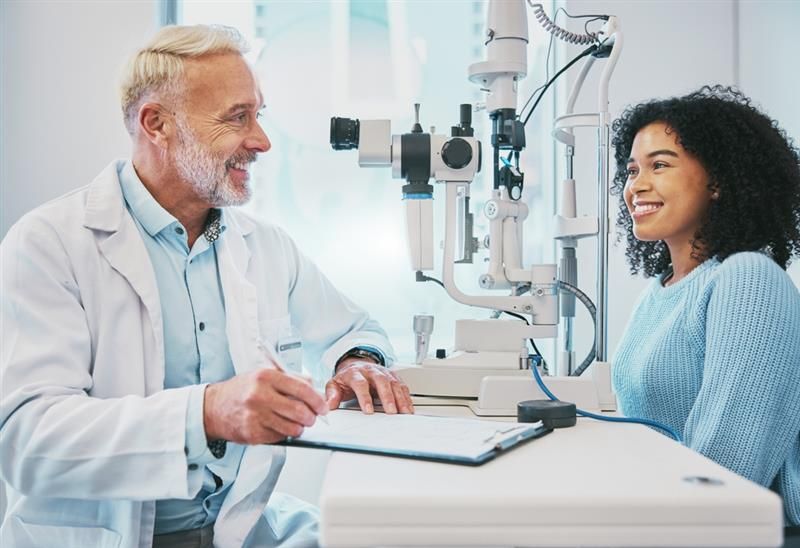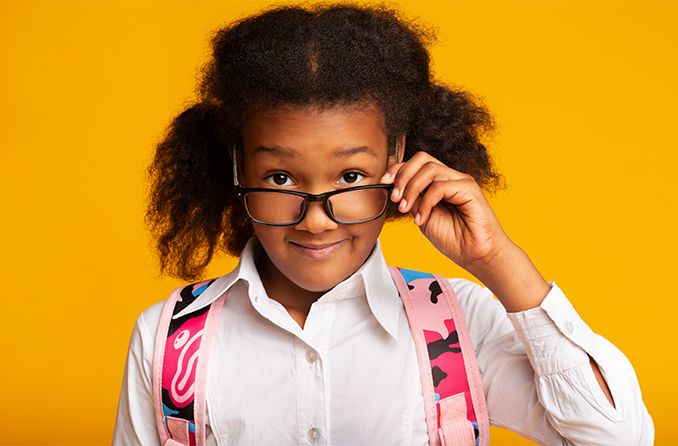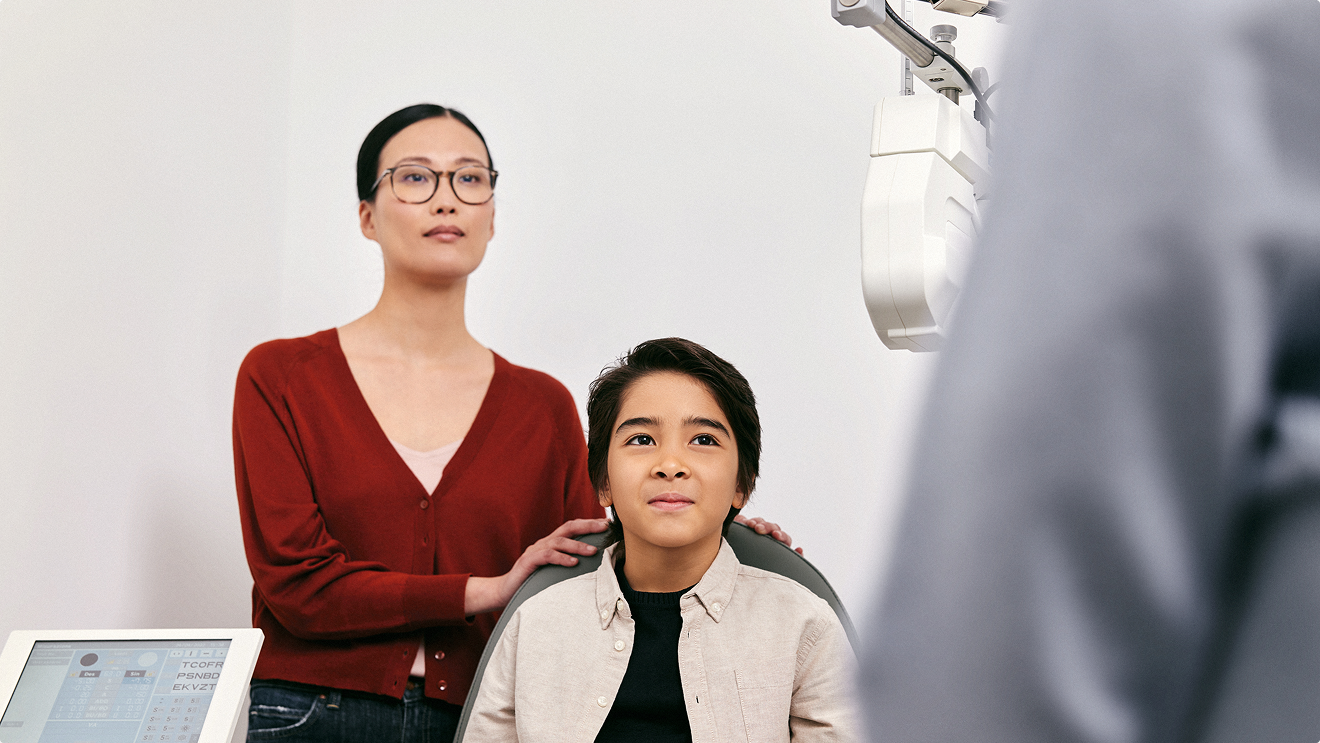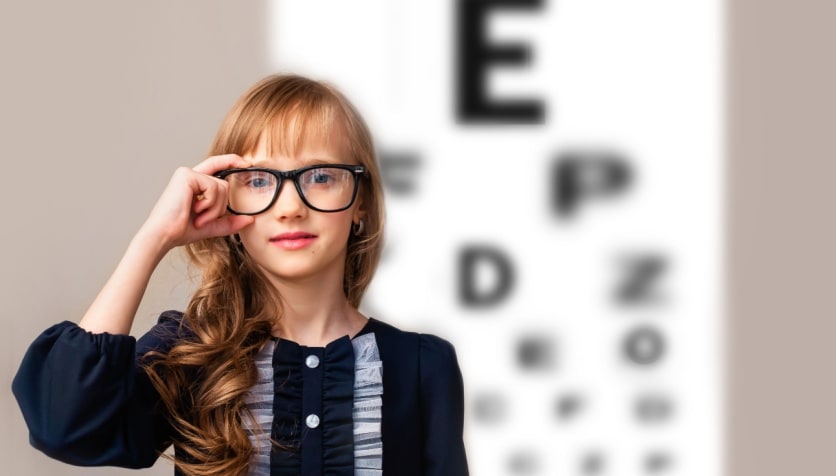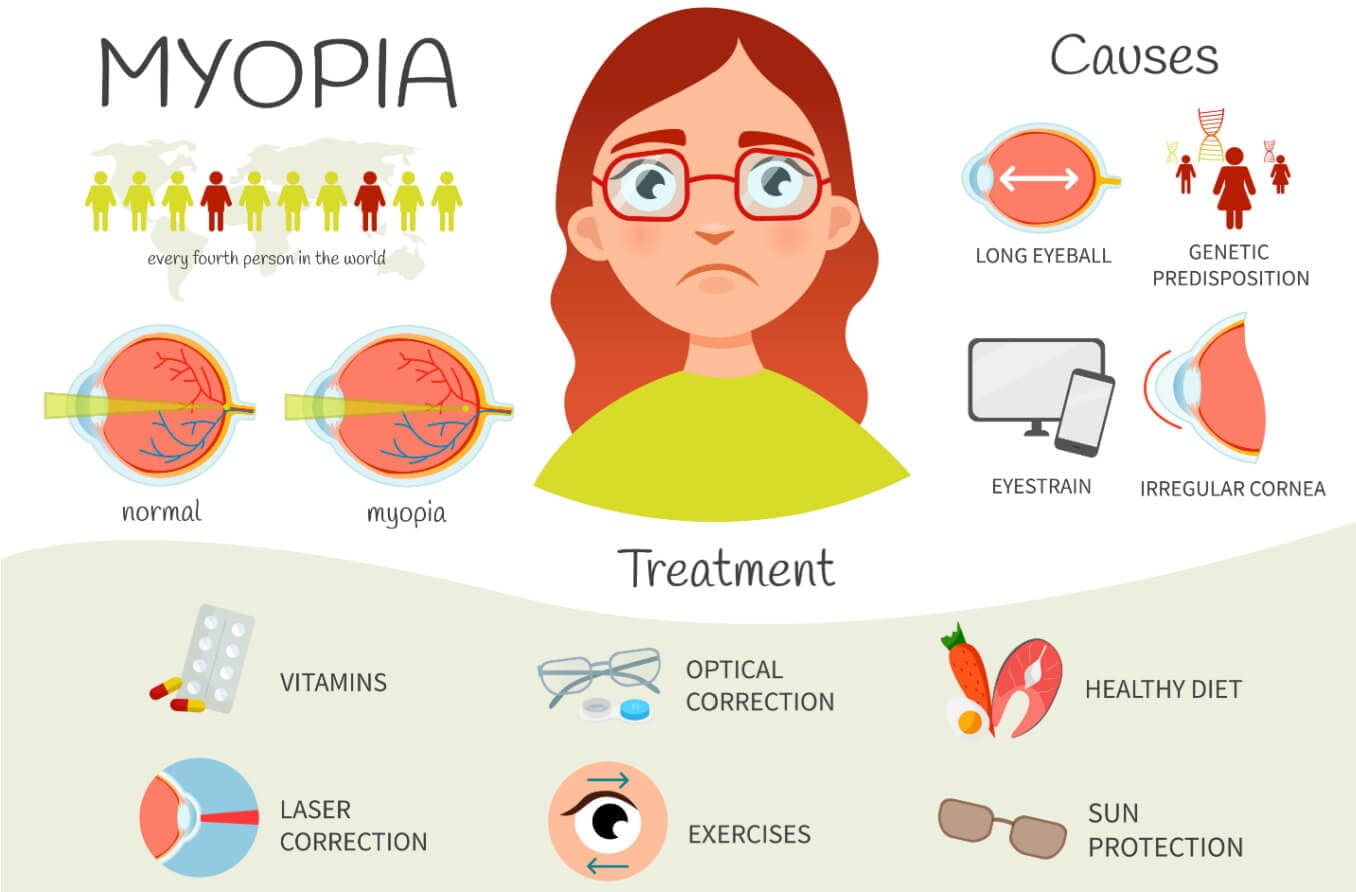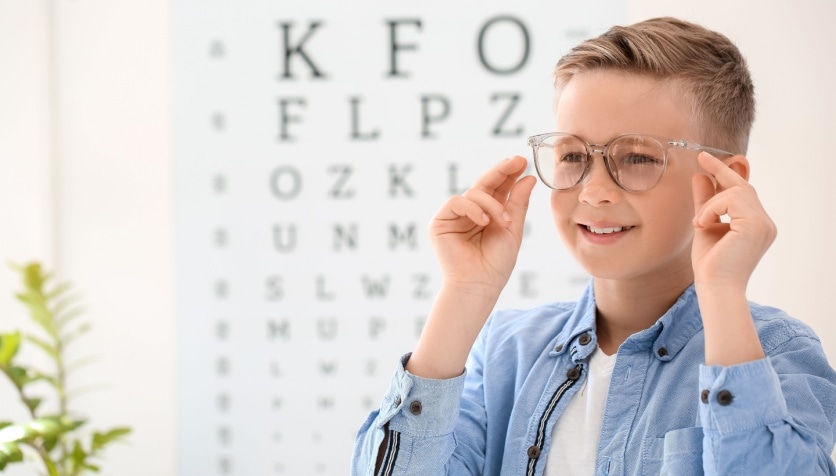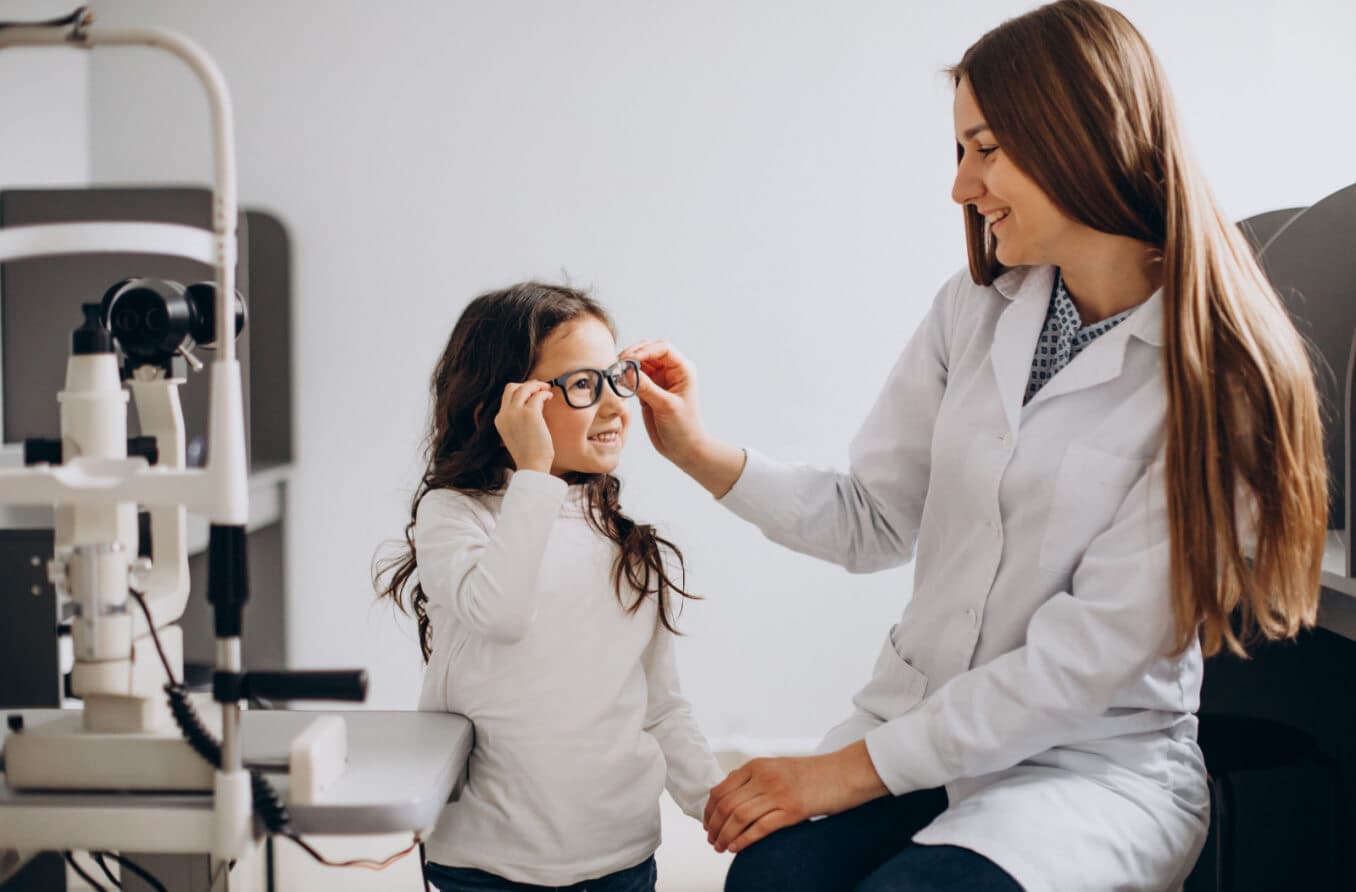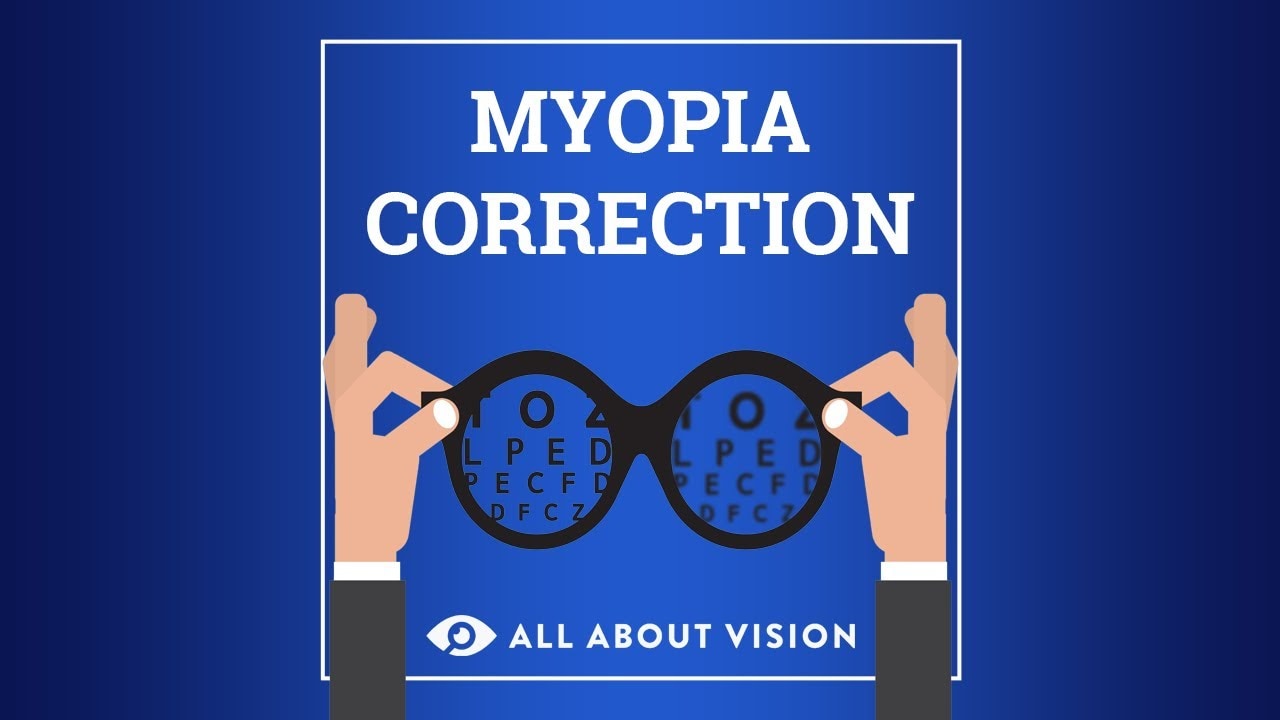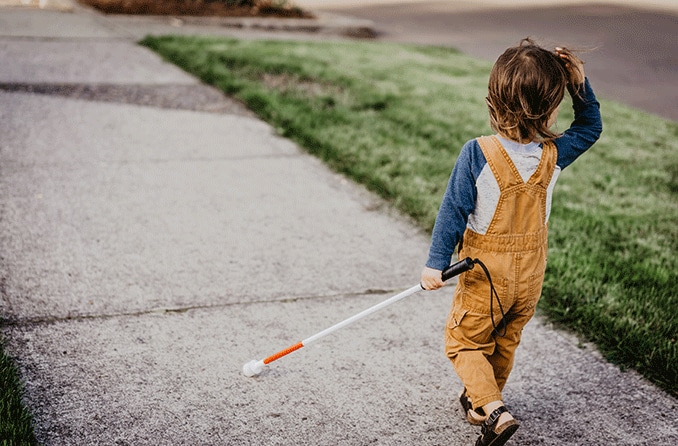What is myopia control?
Myopia control is a group of methods eye doctors can use to slow the progression of childhood myopia. There is no cure for myopia, but there are ways to help control how rapidly it develops or progresses. These include myopia control contact lenses and glasses, atropine eye drops and habit changes.
Why should you be interested in myopia control? Slowing myopia progression may keep your child from developing high myopia. High myopia can lead to sight-threatening problems later in life, such as:
- Myopic macular degeneration
- Cataracts: both posterior subcapsular cataracts and nuclear cataracts
- Primary open-angle glaucoma
- Retinal detachment
Myopia management includes all the eye-health care a person with myopia might need. It ranges from diagnosing childhood myopia to addressing its complications in adulthood. Myopia control is a vital part of myopia management
How does myopia control work?
The most common cause of childhood myopia and its progression is axial elongation of the eye. This is when the eyeball grows too long from front to back. In general, myopia control works by slowing this elongation.
There are several types of effective myopia control, and they can be used one at a time or in combination.
Special myopia control lens designs work by changing how light focuses on the retina. They are available in both myopia control contact lenses and eyeglasses.
Myopia control eye drops are one of the most effective ways to slow myopia progression. Eye doctors have prescribed them for more than 100 years with consistent results. However, scientists still don’t fully understand why they work so well.
Changes to daily habits can also be effective. Sunlight is an important regulator of eye growth, so outdoor time is key.
Prolonged near work can also lead to myopia development and progression. Reducing prolonged periods of near work can lower the risk for myopia development. Taking regular breaks during near work is also very important.
Myopia control methods
Currently, there are three broad categories of interventions for myopia control. They each work in different ways to counteract myopia development or progression:
- Lenses – Myopia control contact lenses, myopia control eyeglasses and orthokeratology.
- Eye drops – Low-dose atropine eye drops.
- Habit adjustments – Increasing time outdoors and reducing prolonged near-work activities.
Myopia control contact lenses
Myopia control contact lenses are very different from the lenses that correct myopia.
Myopia control contact lenses have different focusing power in different zones. They have full focusing power in the center but less power around the periphery. These lower-power areas ensure that all light entering the eye is focused in front of the retina.
This is called peripheral myopic defocus.
Research shows that focusing light in front of the retina in this way can help stop the eye from growing longer. In fact, myopia control contact lenses can slow myopia progression by up to 59%.
One example of myopia control contact lenses available in the U.S. is the MiSight 1-day lenses by CooperVision. These lenses are the first and only FDA-approved contacts to help reduce the rate of myopia progression in children.
The multifocal contact lenses used to correct presbyopia can also help slow progression. However, they’re not as effective as myopia control contact lenses.
Myopia control glasses
Over the last few years, researchers have made significant progress in developing myopia control eyeglasses. Studies show that these lenses can reduce myopia progression by more than 60%. They work much like myopia control contacts by slowing eye elongation through peripheral myopic defocus.
In 2025, the U.S. Food and Drug Administration (FDA) authorized marketing of the Essilor Stellest lens as the first FDA-approved myopia control eyeglass lens in the United States. It can correct myopia, with or without astigmatism, and slow its progression in children ages 6 to 12. Clinical data showed that Stellest slowed myopia progression by 71% and reduced eye elongation by 53% over two years compared to single-vision lenses.
Stellest uses HALT (Highly Aspherical Lenslet Target) technology to create myopic defocus.
Another lens designed with a similar purpose is Hoya’s MiYOSMART, which applies D.I.M.S. (Defocus Incorporated Multiple Segments) technology to manage myopia progression. While MiYOSMART has shown success, it is not yet approved for use in the United States.
Some doctors also use standard multifocal lenses to help slow myopia progression. They can be effective, but they don’t slow progression as much as myopia control glasses.
Orthokeratology
Orthokeratology, also known as ortho-k, is a common type of vision correction. Many doctors also use ortho-k to control myopia progression in children.
Ortho-k uses specialized rigid gas-permeable contact lenses that are only worn overnight. The lenses temporarily change the shape of the cornea during sleep, so vision is clear the next day.
This temporary change also creates peripheral myopic defocus and reduces peripheral hyperopic blur. Research has shown that ortho-k therapy can reduce elongation of the eye.
Atropine eye drops
Atropine eye drops relax the focusing muscles inside the eye. They are commonly used to treat inflammatory eye conditions and in diagnosing strabismus.
But eye doctors also use atropine eye drops to slow myopia progression. In fact, new studies in 2025 show that 0.05% atropine can reduce myopia progression by more than 60% in rapidly progressing children.
The FDA reviewed the low-dose atropine product, SYD-101, in 2025. However, they found inadequate data for the effectiveness of the drug.
Until approval, atropine for myopia remains an off-label treatment in the United States.
READ MORE: Myopia Awareness Week
Detecting myopia early
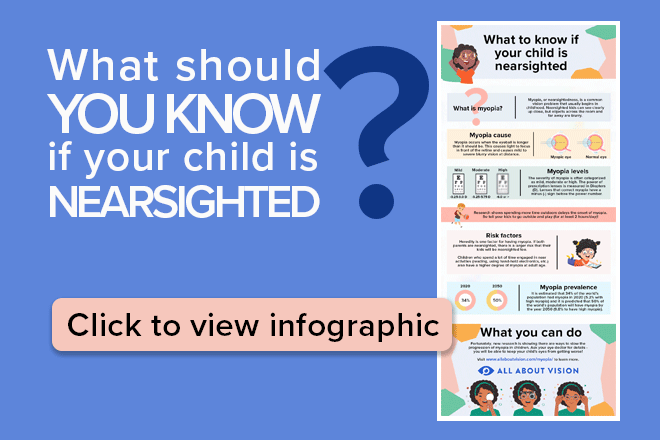
The best way to take advantage of myopia control methods is to detect myopia early. This means ensuring that kids receive early childhood eye exams.
Routine eye exams are important for all kids, even if they don’t seem to have vision problems. Nearsighted kids often don’t have obvious symptoms or even realize they are nearsighted.
Routine eye exams are especially important for kids with parents or siblings who have myopia.
Babies should have an eye exam at around 6 months, and preschool-aged kids should have one between 3 and 5. Children 5 and over should have eye exams every year, starting before they enter first grade.
Worried about your child’s myopia?
Find an eye doctor near you and learn about myopia management options.
